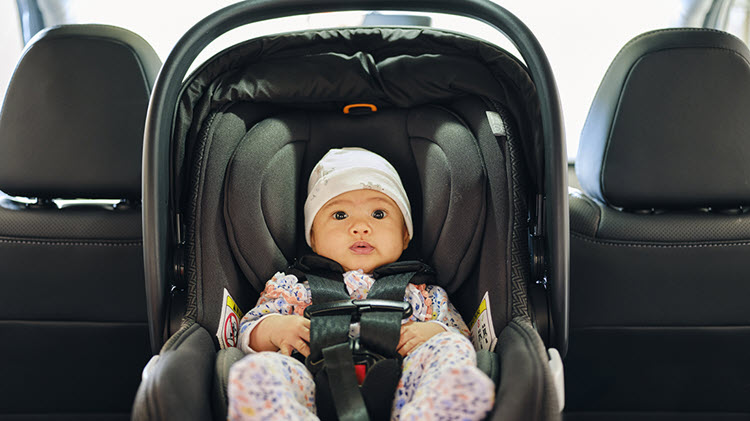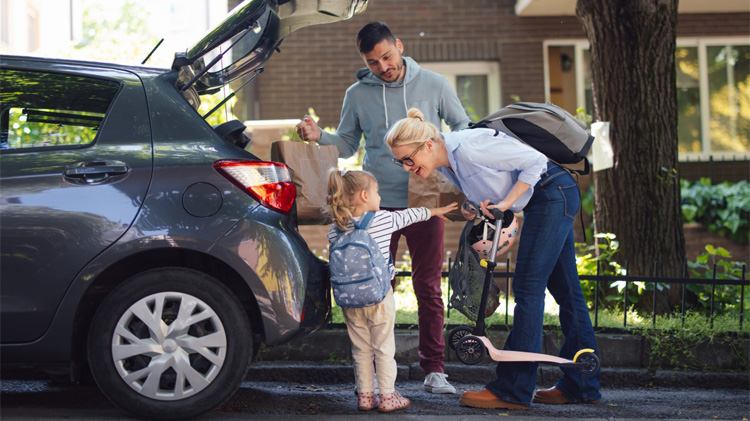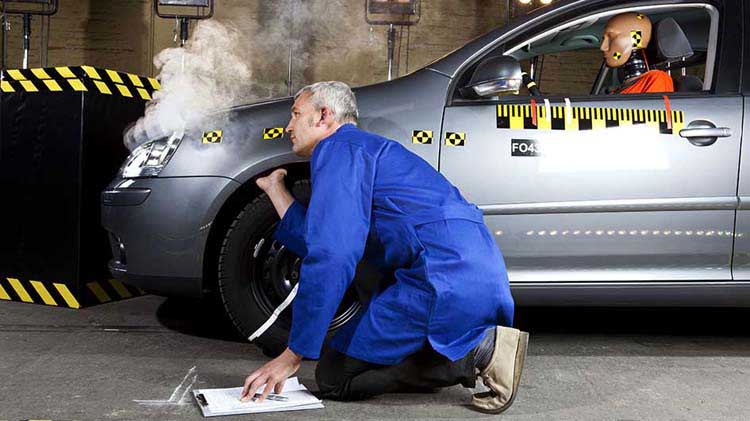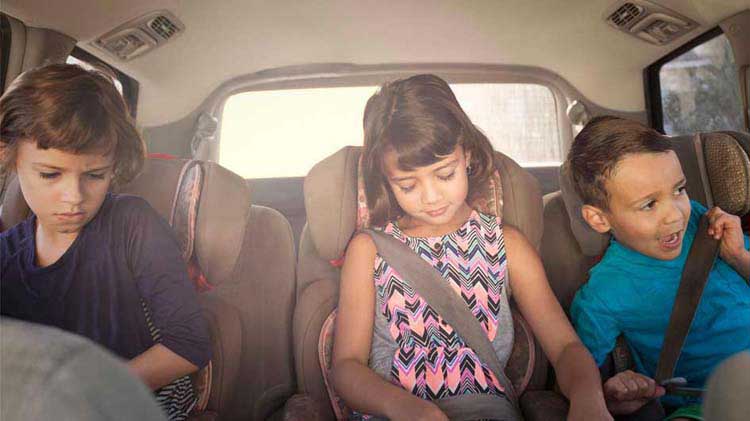Car seat basics: Safety tips and how to install one
Learn about the types of car seats and car seat safety tips to help protect your kids.
According to 2023 reports from the Traffic Safety Marketing/National Highway Traffic Safety Association (NHTSA), 43% of the children involved in fatal car accidents were unrestrained at the time of the incident. Furthermore, using the correct car seat reduces the risk of death in passenger car crashes — by 71% for children under one year old and by 54% for children aged 1 to 4 years.
“Today’s car seats are specially designed to keep children safer in case of a crash, but they won’t work if you’re not using the right seat or it’s not installed correctly,” says Laurel Straub, assistant vice president of Enterprise Research at State Farm®. “With the work done by State Farm and The Children’s Hospital of Philadelphia over 25 years ago to create Partners for Child Passenger Safety, parents could understand the importance of car seat safety and learn how to take extra steps for safety every time they get in the car.”
From Car Seat to Driver’s Seat™, State Farm has been committed to the safety of its customers for over 100 years. To help keep your child safe, here is our comprehensive guide to car seat and child passenger safety.
Beware of secondhand car seats
Your car seat should have an expiration date stamped on it, and it should be replaced if it’s expired. Car seats are largely manufactured from plastic, which can degrade over time — especially due to factors like heat and cold. Degradation of plastic makes it brittle, reducing its safety effectiveness. It is best to avoid buying a used car seat. You may think you’re getting a bargain, but it may be missing parts or may have been in a crash.
Know your child’s height and weight
Contrary to what many parents think, it’s height and weight — not age — that determines which kind of car seat to use. Keep your child rear-facing until they outgrow the car seat’s recommended height and weight range. Many manufacturers are making seats to fit and keep children rear-facing long after their first birthday for their safety.
In a 2022 study conducted by State Farm, reasons parents cited for not using child safety seats included the child not wanting to use it, the child being “too old” for the seat or the seat being inconvenient. Because safety is paramount when driving in a vehicle, it’s crucial to follow recommended guidelines, regardless of the child’s age and attitude, to help protect them.
Securing kids properly is the number one guideline for child passenger safety. Your child’s height and weight will determine whether they need a car seat, booster seat or seat belt.
How to choose a car seat
Seats must meet federal child restraint system standards. As mentioned above, consider your kid’s height and weight and read the labels on the seats when looking to purchase one. Since there can be a lot to consider when choosing a seat, let’s look at the different types of car seats. There are three basic types of car seats: rear-facing, forward-facing and booster.
1. Rear-facing car seat
A rear-facing car seat may include an infant seat, convertible or all-in-one. The harness moves with the child during a crash while helping protect their neck and spinal cord. Keep your child in a rear-facing seat until they outgrow the manufacturer’s height and weight requirements.
2. Forward-facing car seat
When the child outgrows a rear-facing seat, they will move into a forward-facing seat. This seat's harness limits the child's movement during an accident. They should be in a seat with a harness that can be worn as long as possible.
3. Booster seat
Once the child's weight or height exceeds those for a forward-facing seat, they can move into a booster seat. This seat uses the vehicle's seat belt. The booster lifts the child up a little higher so that the seat belt fits properly over the lap and shoulders. The booster seat is typically the final car seat stage for children.
Buying a car seat
Once you understand the federal car seat safety guidelines and the different types of car seats, which model are you going to pick? There can be varying models to choose from for each type of seat. A convertible car seat goes from rear-facing to forward-facing — so you get one seat that can last a little longer. And an all-in-one might work even better as this type of seat usually goes from rear-facing to front-facing to booster. Consider one that fits within your family’s budget and is appropriate for your child.
A helpful resource from the NHTSA is the Car Seat Finder tool. It helps provide car seat options and brands based on a child’s age, weight and height.
After you have purchased a car seat, consider registering it with the manufacturer. This allows you to receive important information in the case there are recalls or safety notices for that specific seat.
Does insurance cover car seat replacement?
If you've been in an accident, confirm that the car seat is safe to use before putting a child back in it. NHTSA recommends replacing seats after a moderate or severe crash. Car seats don't automatically need to be replaced following a minor crash. A minor crash typically means you can drive away from the accident, none of the air bags were deployed and no one was injured in the collision. If you do need a new seat, it may be covered by your auto insurance policy in the event of a covered claim. Talk to your State Farm agent or claim rep for more information about your policy’s car seat replacement coverage.
Installing a car seat
Installing a car seat correctly is an important component of maintaining car seat safety. Follow the instructions provided with your car seat for proper installation. If you're not sure about installation, consult an expert by calling the car seat manufacturer's customer service center. You might also consider attending a local car seat checkup event.
Here are some general car seat safety considerations when installing one:
- Place the car seat in the back — front airbags can cause injury, even to a child in a car seat.
- Use the inch test — see that you can’t move the car seat more than an inch in any direction. To test, tug hard on the base near the opening of the seat belt path.
- Secure your child correctly — all clips and buckles should be fastened and tightened so you can’t pinch extra webbing at the shoulder. Don’t place heavy coats or blankets under the straps, and confirm the straps are not twisted.
- Confirm it’s secured — help keep car seats secure with seat belts when not in use or they could become a projectile.
Older kids and seatbelts
If you think your kid is outgrowing a booster seat, Safe Kids Worldwide has a safety belt fit test. This test includes:
- When the child’s back and bottom are against the vehicle seat back, their knees should bend at the edge of the seat and their feet should touch the floor of the car for stability.
- The lap belt should fit across the hips or upper thighs and not across the stomach area.
- The shoulder belt should fit across the chest and shoulder and never across the neck or face.
If they pass the above test, your child might be ready to move to the vehicle’s seat. And it is generally safer for them to continue to ride in the back seat away from air bags until age 13.
It's important to prioritize your child’s safety in a car. Here are some resources that might assist you in choosing the right car seat and learning how to install it properly.
- Safe Kids Ultimate Car Seat Guide
- Children's Hospital of Philadelphia Car Seat & Child Passenger Safety Videos
- Healthy Children's Car Seats: Information for Families




